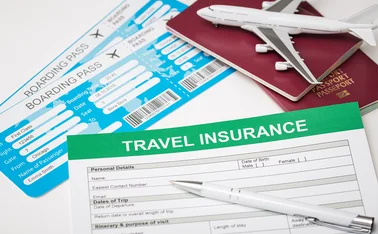
Telematics: Taking the wheel?

Will plans by car manufacturers to fit telematics black boxes to new vehicles see them become major players in the motor insurance sector?
The announcement of a plan to fit black boxes as standard in certain Citroën cars has brought telematics back to the top of the insurance industry’s agenda.
In February, the vehicle manufacturer revealed plans to fit all Citroën C1 Connexion cars with a black box, offering free insurance for the first year of ownership to eligible drivers aged between 19 and 75 with cover underwritten by Direct Line.
Citroën’s interest in the motor insurance space – despite its partnership with Direct Line – has stoked debate. If manufacturers start to install black box technology in the factory, could they become major players in the insurance sector? David Waring, insurer division director at SSP, says: “The interesting question to ask is ‘If I am a motor insurer in five years’ time, or even three years’ time, is my competitor Admiral or is it BMW?’” It is a pertinent query, and one that underlines how far the telematics market has developed in the past decade.
Towers Watson’s senior consultant Tony Lovick was at Norwich Union, now Aviva, when it took some of the industry’s first steps into the UK’s telematics market. Having launched a trial of 5000 motorists in 2004, the firm launched a pay-as-you drive policy in October 2006, becoming the first UK insurer to offer usage-based motor cover. Lovick says Norwich Union initially expected there would be little movement from motor manufacturers to install telematics boxes in cars until 2008. He adds: “As it happens, there was the financial crisis and various motor manufacturers had to be bailed out by the US government, so that was delayed.”
Some market commentators believe manufacturers are well placed to challenge the traditional motor insurance players. Coverbox deputy chairman Johan Van Der Merwe argues that, unlike insurers, car makers have the advantage of not having an existing book of business to run in competition with telematics. He says: “The car manufacturer has got no constraints about eroding their own business; they easily understand the principles of telematics. If Citroën is there today, how far behind is BMW? I would be surprised if it’s very far. More motor manufacturers will enter the market using telematics as a tool to sell their cars to a younger market. It’s very exciting.”
Powerful position
The fact that Citroën partnered with Direct Line to offer its insurance solution could mean other manufacturers follow suit. However, there is a possibility manufacturers will snub direct insurers in favour of different solutions. Lovick believes they may seek to collaborate with other related businesses, such as aggregators, comfortable in the knowledge that their customers may be getting a better deal. He says: “The aggregators have got a powerful position in the market at the moment and they won’t want to be cut out, so a logical move for them would be to try to offer something of value in this space.
“The logical question for the car manufacturer would be to say ‘If I were working directly with an insurer, how could I guarantee the best price for the customer at all times?’ Certain people might get a good deal, but I don’t think you could guarantee that any insurer would be the cheapest for every single customer, in every part of the country.”
However, Bob Skerrett, RSA UK & group telematics lead, believes manufacturers are likely to partner with insurers to utilise their experience and knowledge of the underwriting business. “It’s got to be an opportunity. You would expect telematics providers to be working with car manufacturers to offer propositions, and the C1 is an example of this,” he says. “Car makers will look to form partnerships where they don’t have core capability. It doesn’t mean they couldn’t become underwriters, but insurers are really good at understanding customer behaviour and pricing for risk.”
While market commentators seem to disagree on the role car manufacturers may play in the future of telematics, there is consensus that the market is flourishing. The number, and type, of telematics devices in use across the country has grown massively, with the falling costs of technology commonly cited as a factor. The use of smartphones, in-built black boxes like those in the C1, and plug-in solutions have all increased.
Cross-platform strategies
However, cross-platform strategies are crucial for continued development. Skerret says: “There will be more devices on the market, and it will accelerate growth, but the choice of platform will come down to the customer. Even if they’ve got a box in their car at the point of manufacture, they’ve probably also got a telematics app on their smartphone.”
The amount of choice means insurance customers will not necessarily persevere with the same devices, let alone the same insurers. Allowing customers to take their data with them when migrating between either telematics devices or insurers is currently being examined by the Association of British Insurers telematics working party in the hope of finding core data standards the can be shared.
However, Waring warns the speed of development in the market may result in a set of unsophisticated standards: “You’ve got to reach a consensus. As they say, a camel is a horse designed by committee. When you are trying to keep everybody happy, you inevitably end up with a compromise.”
Mike Brockman, founder and joint chief executive of Insure the Box, concurs that agreeing standards is likely to be a challenge: “This technology is moving so fast there is no such thing as a standard. The competitive advantage is doing things differently, and with more advanced technology.”
Firms would also need to agree on what data they should collect under a common set of standards. Could insurers agree on the metrics they would use to rate drivers? Waring says: “One insurer, for example, was interested in the direction of my commute. If I’m commuting east in the morning and west in the evening, I’ve got the sun in my eyes and, therefore, have more chance of an accident. It’s highly likely that wouldn’t be included in any standard data.”
Mark Cliff, Ageas’ chief executive of retail & distribution, says that, through the ABI’s working party, motor manufacturers have been keen to contribute to minimum data standards to help customers take ownership of their data. He explains: “They’d much rather the customer owned the data and then they could decide whether they wanted to use it. For example, if a telematics user bought a new car with a pre-fitted box, they could take their data with them.”
Cliff continues: “If we build a set of standards between ourselves and the vehicle manufacturers, which is what we’re trying to do through the ABI, we can at least get to a place where that data could be transportable between insurers.”
However, Waring says some insurers have shown what he describes as “an obsession” with owning data and source information. He adds: “When Aviva did this, years ago, one of the things it got hung up on was trying to build too much data into the rating. It is important that the customer proposition is very clear. If you make it too complicated you have a clever product from an actuarial point of view, but the customer can’t understand how his driving style affects his premium and, therefore, there’s no real customer proposition.”
Van Der Merwe, meanwhile, says some insurers are “refusing to acknowledge telematics”, allowing the more sophisticated firms to cherry-pick customers. “As the market for telematics devices grows, the impact on insurers will increase,” he adds. “It will very quickly affect their loss ratios, so then they will have to move into the telematics market.”
He attributes insurers’ reluctance to the strength motor manufacturers have as new entrants. He explains: “The problem insurers are facing is if you are already an insurer with a big book of motor business, why would you want to enter into the telematics market? You’re going to have to sell telematics cheaper to people from whom you’re already getting a good price. In entering into the telematics market you’re actually starting to sell against yourself.”
Waring agrees: “To an extent, insurers are pricing so that they don’t sell too many policies, because they’re still unsure of the technology themselves. They don’t understand the risk yet, so they don’t want to get into a big risk area until they understand the data, and that seems to be moving very slowly.” Such an approach will not last long once telematics reaches a tipping point, says Van Der Merwe, with insurers likely to find their hands forced. He concludes: “I don’t think it’s an ‘if’ anymore.”
Tales from the archive: 2008
In 2008 – following Norwich Union’s unsuccessful early foray into the telematics space – Cobra Wunelli and BDML launched Coverbox, promising to make the fledging market a success.
The company behind a new pay-as-you-drive-style insurance product says lessons have been learnt from Norwich Union’s earlier attempts to launch a similar offering.
The Coverbox product, created by data management company Cobra Wunelli and Capita-owned motor intermediary BDML, is due to launch in January. It uses telematics technology to monitor customers’ journeys – in terms of mileage and hours of use – and charges them accordingly. It resembles NU’s PAYD proposition, which was shelved earlier this year.
Paul Stacy, managing director of Cobra Wunelli, said Coverbox has the backing of a panel of up to six insurers. He added: “Lessons could only be learnt from the first entrant into the market, and NU should be applauded for that.”
Stacy, previously operations director at BDML, explained the technology does not track speed for underwriting purposes but focuses on tracking times of day and distance driven, as well as being simple to use.
An NU spokeswoman said: “Since the PAYD launch in October 2006, we have learnt a great deal about driver behaviour. However, the market for telematic-enabled insurance didn’t evolve as quickly as we predicted. We are not re-entering this market.”
Cobra Wunelli chairman Sandy Dunn – also chairman and chief executive of BDML – said: “We believe both consumers and the motor industry are ready for PAYD. Others have tried before but our solution is new generation, highly capable and based on integrated security solutions specified and proven by the leading car manufacturers in Europe and Japan.
“As well as fundamental features such as monitoring time and location of vehicle use, the Coverbox system enables tracking and location of stolen vehicles through GPS technology – an added bonus for our customers.”
Telematics in numbers
1 - Current market penetration rate (percent) of telematics in the UK
15 - Number of players in the UK telematics market as of March 2013
1999 - Year US insurer Progressive launched its telematics product, becoming the first to do so
300 000 - Number of telematics policies used in the UK market at the moment
900 000 - Number of drivers Progressive has on its telematics book, making it the world’s largest supplier
Only users who have a paid subscription or are part of a corporate subscription are able to print or copy content.
To access these options, along with all other subscription benefits, please contact info@postonline.co.uk or view our subscription options here: https://subscriptions.postonline.co.uk/subscribe
You are currently unable to print this content. Please contact info@postonline.co.uk to find out more.
You are currently unable to copy this content. Please contact info@postonline.co.uk to find out more.
Copyright Infopro Digital Limited. All rights reserved.
As outlined in our terms and conditions, https://www.infopro-digital.com/terms-and-conditions/subscriptions/ (point 2.4), printing is limited to a single copy.
If you would like to purchase additional rights please email info@postonline.co.uk
Copyright Infopro Digital Limited. All rights reserved.
You may share this content using our article tools. As outlined in our terms and conditions, https://www.infopro-digital.com/terms-and-conditions/subscriptions/ (clause 2.4), an Authorised User may only make one copy of the materials for their own personal use. You must also comply with the restrictions in clause 2.5.
If you would like to purchase additional rights please email info@postonline.co.uk







